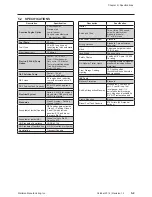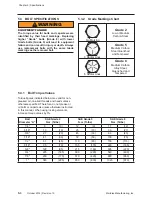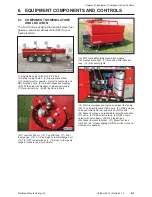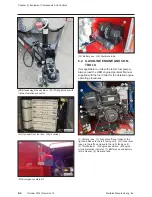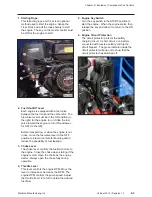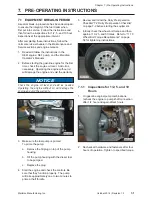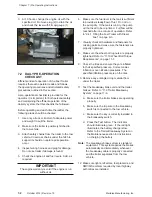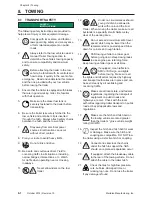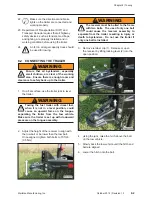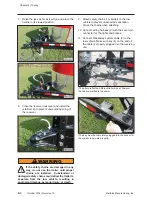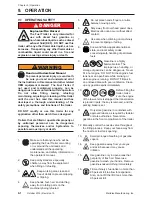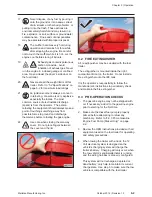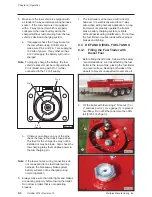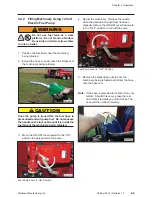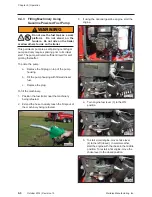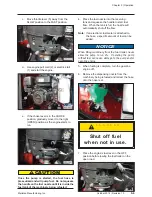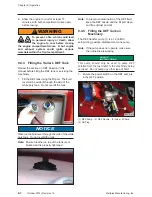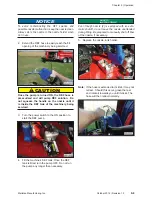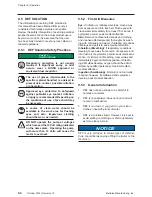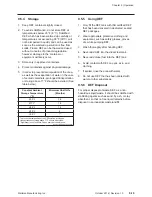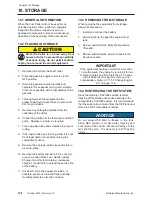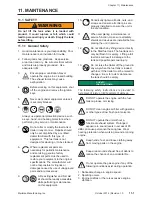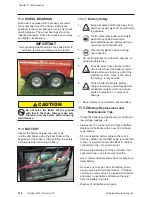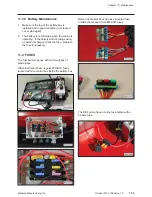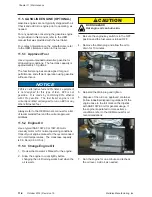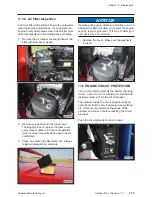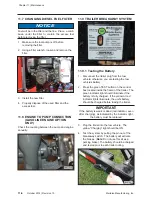
Meridian Manufacturing, Inc.
October 2014 | Revision 1.0
9-2
17.
Never dispose of any fuel by pouring it
onto the ground or into a sewer, street
drain, stream or other body of water, or
putting it into the trash. These actions are
environmentally harmful and may result in a
fire, explosion, or soil, surface or groundwater
contamination. Fines and criminal penalties
may be associated with improper disposal.
18.
The muffler becomes very hot during
operation and remains hot for a while
after stopping the engine. Be careful
not to touch the muffler while it is hot. Let the
engine cool before storing it indoors.
19.
Exhaust gas contains poisonous
carbon monoxide. Avoid
inhalation of exhaust gas. Never
run the engine in a closed garage or confined
area. Open at least the driver’s side door on
the fuel trailer.
20.
Never exceed the weight limits of this
trailer. Refer to “5.2 Specifications” on
page 5-2 for maximum load ratings.
21.
An ignition source is always a concern
in refueling. Gasoline is very explosive,
especially the fumes. The most
common source of electrostatic discharge
(spark) is from the operator. The person
refueling the equipment should always make a
point of touching something away from
possible fumes to ground and discharge
themselves before refueling the gas engine.
22.
Use care when closing the manway
cover. Do not place fingers between
the cover and the rim.
9.2 FIRE EXTINGUISHER
A fire extinguisher may be supplied with the fuel
trailer.
The extinguisher is mounted inside the right
compartment door on the trailer. Do not install a
fire extinguisher onto the IBC tank.
It is the operator’s responsibility to follow the
manufacturer’s instructions to periodically check
and maintain the fire extinguisher.
9.3 PRE-OPERATION CHECKS
1. The gasoline engine may not be shipped with
oil. If necessary, add oil to the gasoline engine
prior to starting for the first time.
2. Make sure the diesel fuel pump is properly
primed before attempting to refuel any
machinery. Refer to “2.6.3 Prime Gasoline
Engine Fuel Pump (Diesel Only)” on page
2-2.
3. Review the OEM instructions provided with all
equipment used on the fuel trailer for operating
and safety precautions.
4. When towing the trailer with a truck, the 12
Volt electrical system is designed so the
vehicle’s charging system will charge the
trailer’s battery. Charging will only occur when
the tow vehicle’s engine/alternator is running
and the wiring harness is properly configured.
This system will not recharge a depleted or
dead battery; only help to maintain its current
charge state. Use step 5 to make sure the tow
vehicle is compatible with the fuel trailer.
Chapter 9 | Operation

